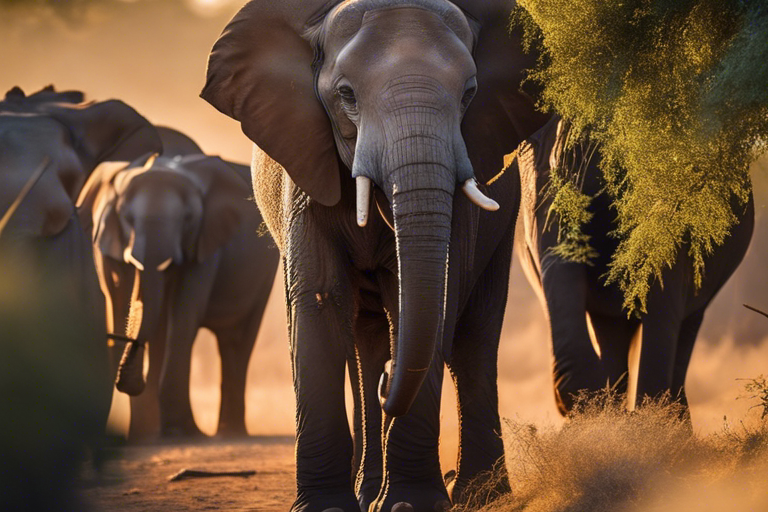How trees tell elephants it’s time to stop eating?
Trees and elephants have a complex and interdependent relationship. Trees provide food, shade, and shelter for elephants, while elephants help to disperse, plant, and prune the trees. However, trees also have ways of telling elephants when it’s time to stop eating them. Here are some of the ways that trees communicate with elephants:
- Chemical signals: Some trees, such as acacias, can produce chemicals that make their leaves less palatable or even toxic to elephants when they sense that they are being over-browsed. These chemicals can also be released into the air, signaling to other nearby trees to do the same. This way, the trees can deter elephants from eating too much of them and protect themselves from being damaged.
- Seasonal changes: Some trees, such as baobabs, can change their appearance and availability according to the seasons. During the dry season, baobabs shed their leaves and store water in their trunks, making them less attractive and accessible to elephants. During the rainy season, baobabs produce new leaves and flowers, attracting elephants and other animals to feed on them. This way, the trees can balance their growth and reproduction with their consumption by elephants.
- Physical barriers: Some trees, such as palms, can grow spines, thorns, or hard shells that make them difficult or painful for elephants to eat. These physical barriers can protect the trees from being eaten or damaged by elephants, especially the vital parts such as the stems, fruits, or seeds. However, some elephants can overcome these barriers by using their trunks, tusks, or feet to break, peel, or crush them.
What are some other ways that trees and elephants interact?
Here are some of the ways that trees and elephants interact:
Elephants eat trees: Elephants are herbivores that consume a large amount of plant material every day. They eat the leaves, bark, branches, fruits, and seeds of various tree species, such as acacias, baobabs, marulas, and knobthorns. By eating trees, elephants obtain nutrients, water, and minerals that they need for their survival.
Elephants prune trees: When elephants eat trees, they also prune them by breaking, stripping, or pushing them over. This can help the trees to grow taller and stronger, and to produce more flowers and fruits. It can also create gaps in the forest canopy that allow more light and rain to reach the ground, which stimulates the growth of grasses and other plants.
Elephants disperse and germinate tree seeds: Elephants are important seed dispersers and germinators of many tree species. They can swallow large seeds whole and pass them through their digestive system, which can enhance their germination rate. They can also transport seeds over long distances in their dung, which acts as a fertilizer and a protection from predators and fire. By dispersing and germinating tree seeds, elephants help to maintain the genetic diversity and resilience of the forest.
Elephants shape the forest landscape: Elephants are ecosystem engineers that can transform the forest landscape by their activities. They can create trails, clearings, waterholes, and salt licks that are used by other animals and plants. They can also influence the distribution and abundance of different tree species, and the balance between forest and savanna habitats. By shaping the forest landscape, elephants affect the biodiversity and productivity of the ecosystem.




